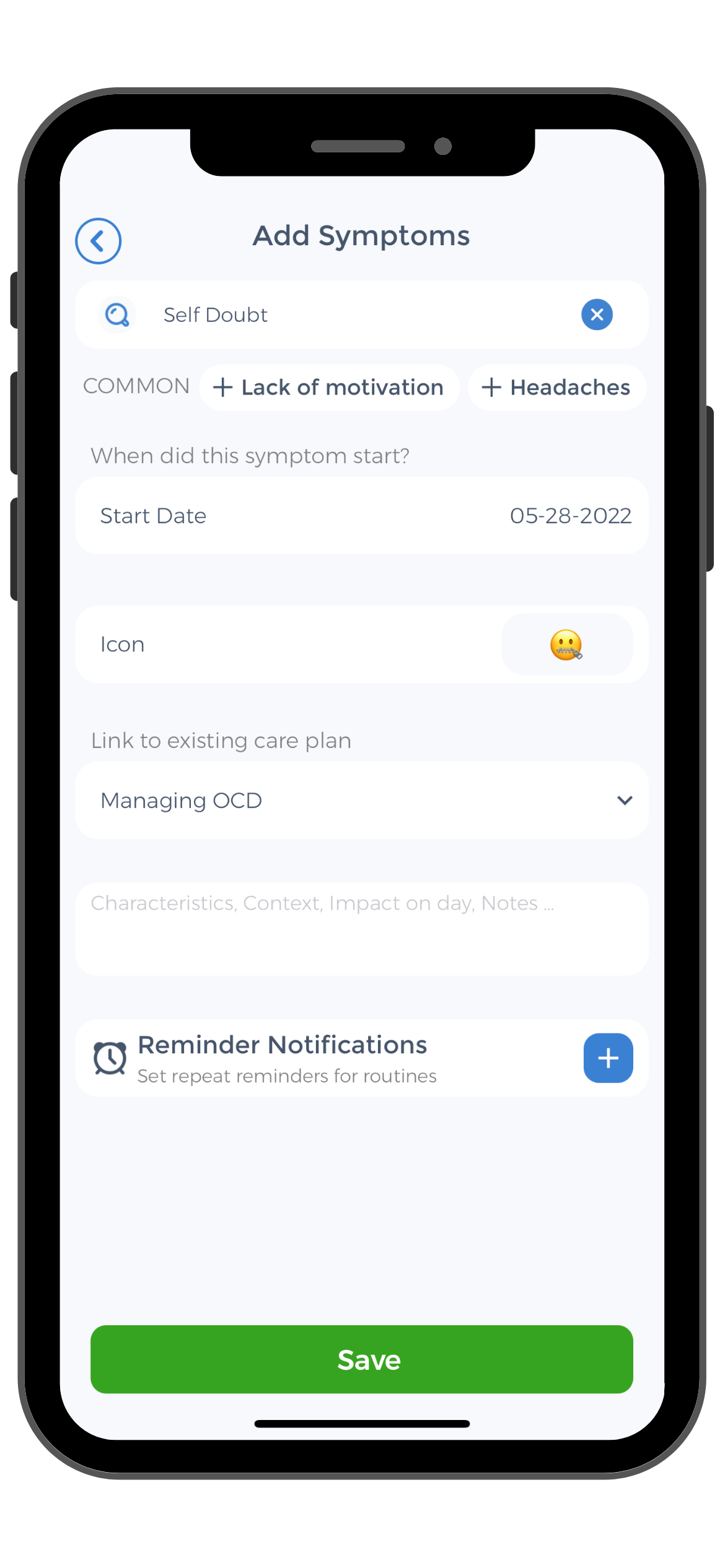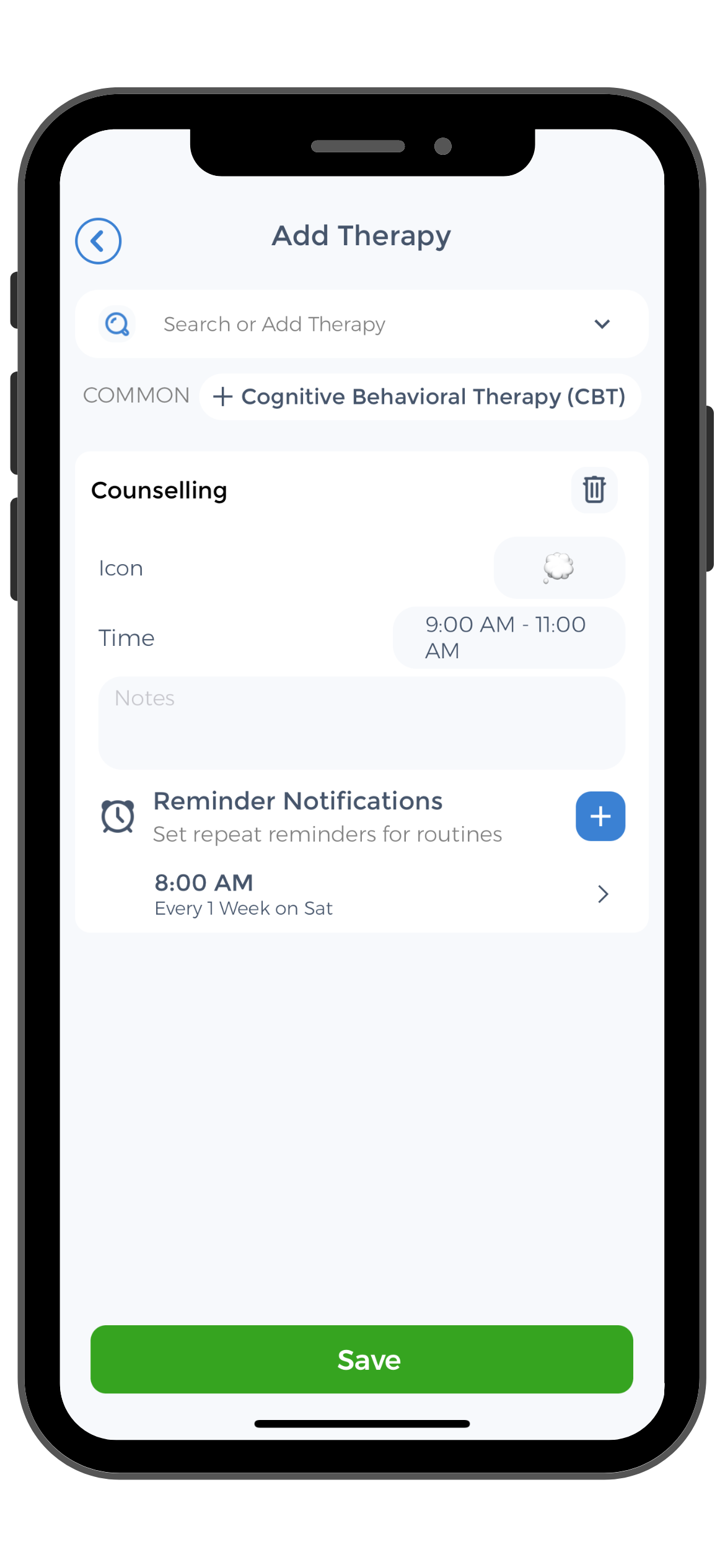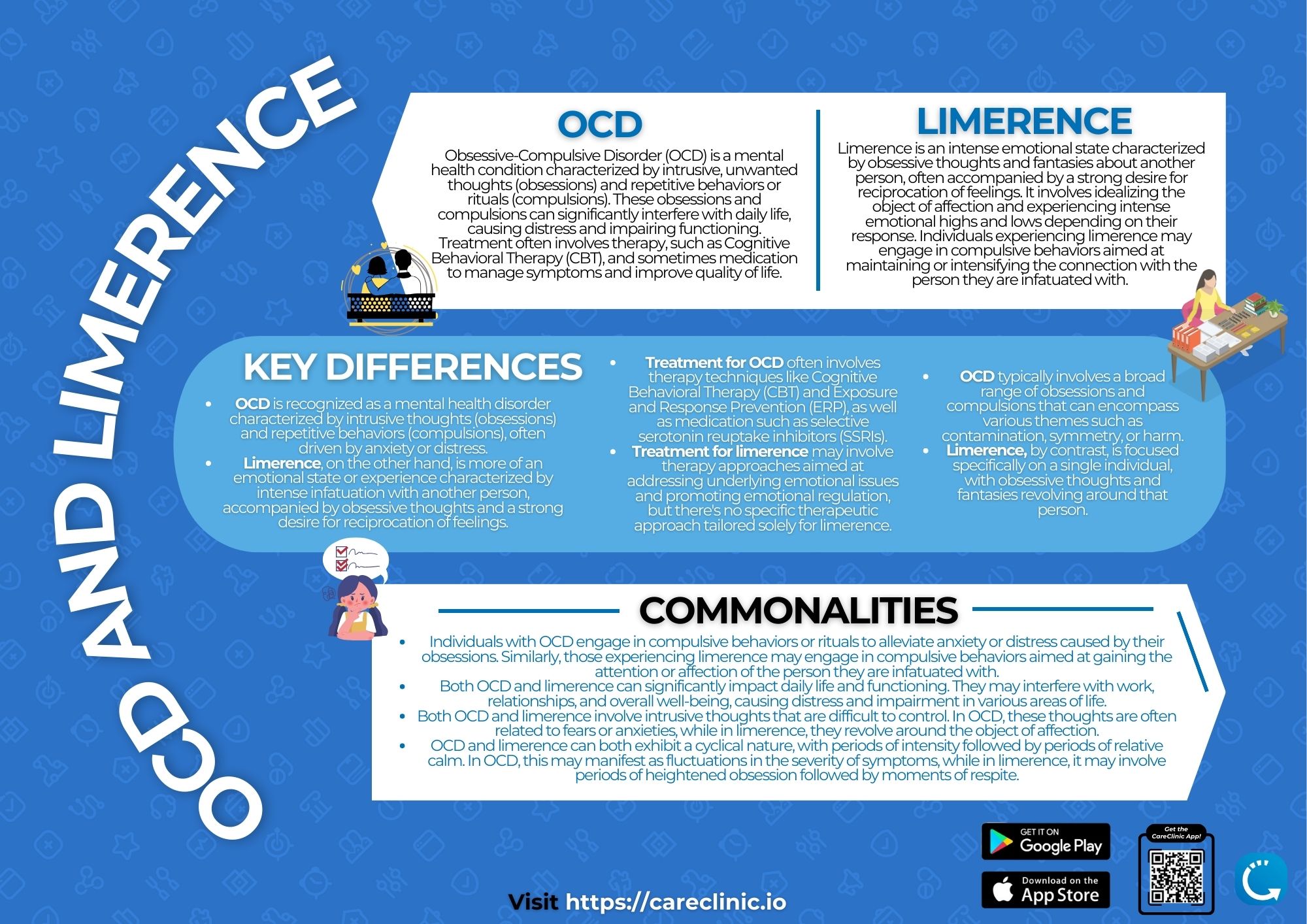
Obsessive-Compulsive Disorder (OCD) and limerence are two distinct psychological phenomena that can have a profound impact on an individual’s daily life and emotional well-being. While they may appear unrelated at first glance, there exists a noteworthy connection between these two conditions.
By delving into the nature of OCD and limerence, their similarities and differences, as well as exploring psychological theories that link them, we can gain a deeper understanding of this intersection.
Defining OCD: An Overview
OCD is a chronic mental disorders characterized by persistent, unwanted thoughts (obsessions) and repetitive behaviors (compulsions). These thoughts and behaviors often consume a significant amount of time and energy, causing distress and interfering with daily functioning. The Diagnostic and Statistical Manual of Mental Disorders (DSM-5) outlines specific criteria for diagnosing OCD.
The Diagnostic Criteria for OCD
To meet the criteria for OCD, an individual must have obsessions, compulsions, or both. These obsessions and compulsions are time-consuming and cause significant distress or impairment in functioning. They are not attributable to the physiological effects of substances or other medical conditions. To illustrate, let’s take a hypothetical example:
- Obsession: constant fear of contamination by germs
- Compulsion: excessive hand-washing as a response to the fear
Common Symptoms and Behaviors of OCD
 In addition to obsessions and compulsions, individuals with OCD often experience intense anxiety or feelings of dread when confronted with their triggers. These triggers can vary widely. Common themes include contamination, symmetry, forbidden thoughts or images, and doubts. Despite knowing that their fears are irrational, individuals with OCD feel compelled to engage in specific behaviors to alleviate their anxiety temporarily. This can create a distressing cycle that significantly impacts their quality of life.
In addition to obsessions and compulsions, individuals with OCD often experience intense anxiety or feelings of dread when confronted with their triggers. These triggers can vary widely. Common themes include contamination, symmetry, forbidden thoughts or images, and doubts. Despite knowing that their fears are irrational, individuals with OCD feel compelled to engage in specific behaviors to alleviate their anxiety temporarily. This can create a distressing cycle that significantly impacts their quality of life.
Furthermore, OCD can manifest in various forms. Each has its own unique set of obsessions and compulsions. Some individuals may experience obsessions related to hoarding. They feel an overwhelming need to collect and keep items that others consider useless or unnecessary. This can lead to cluttered living spaces and difficulty discarding possessions. This causes significant distress and impairs their ability to function in their environment.
Another common manifestation of OCD is known as “checking.” Individuals with this form of OCD have obsessions centered around the fear of harm or danger. They may feel compelled to repeatedly check things. Such as locks, appliances, or even their own body for signs of injury. This constant need for reassurance can be exhausting and time-consuming. Often interfering with their daily routines and relationships.
Exploring Limerence: A Deep Dive
Limerence, on the other hand, refers to an intense state of infatuation stage or romantic obsession with another person. Coined by psychologist Dorothy Tennov, intrusive thoughts, fantasies, and a strong desire for reciprocation from the object of affection characterize limerence. Unlike OCD, limerence is not recognized as a formal psychiatric diagnosis. However, it is widely acknowledged within the field of psychology.
Delving deeper into the concept of limerence and limerent relationship, it becomes evident that this emotional state can lead individuals to experience a rollercoaster of feelings. The highs of euphoria when in contact with the object of affection are often followed by lows of despair and longing in their absence. This emotional turbulence can create a sense of emotional dependency on the desired person. Further intensifying the limerent objects individual’s fixation.
The Concept of Limerence
Individuals experiencing limerence often display heightened emotional responses, idealization of the desired person, and a preoccupation with thoughts and fantasies about the object of their affection. These intense feelings can be all-consuming and may persist for an extended period. Potentially interfering with daily functioning, personal and other relationships.
Moreover, limerence can sometimes lead individuals to engage in behaviors that they might not otherwise consider. Such as excessive stalking on social media, constantly seeking opportunities for contact with the object of their affection, or even disregarding their own well-being in pursuit of reciprocation. This level of emotional intensity can blur the lines between reality and fantasy. Making it challenging for the limerent person to maintain a clear perspective on the situation.
Typical Signs and Characteristics of Limerence
Signs of limerence can vary from person to person, but some common characteristics include:
- Constant daydreaming about the desired person
- Seeking validation and reassurance from the desired person
- Heightened sensitivity to the desired person’s words and actions
- Intense fear of rejection or abandonment
- Difficulty focusing on other areas of life
The Intersection of OCD and Limerence
While OCD and limerence may seem distinct, they share some underlying features that contribute to their connection. Both conditions involve intrusive thoughts, obsessive patterns of thinking, and a desire to relieve anxiety or distress through specific behaviors. However, it is crucial to distinguish between the two. As the objects of obsession in OCD are typically not rooted in romantic or interpersonal relationships.
Individuals with OCD may experience intrusive thoughts about harming themselves or others, along with compulsive behaviors like excessive hand-washing or checking. On the other hand, limerence is characterized by an intense preoccupation with a particular individual. Often leading to fantasies about romantic healthy relationships and a strong desire for emotional reciprocation.
Similarities Between OCD and Limerence
Despite their differences, there are several areas of overlap between OCD and limerence. Both conditions can cause significant emotional distress, interfere with daily functioning, and impose limitations on personal relationships. Additionally, individuals with OCD and limerence may engage in repetitive and unhealthy behaviors or rituals as a way to manage their anxiety or seek relief from their obsessive thoughts.
Furthermore, both OCD and limerence can impact an individual’s self-esteem and overall sense of well-being. The constant need for reassurance and validation, common in both conditions, can create a cycle of dependency and emotional turmoil that is challenging to break free from without proper support and intervention.
Differences Between OCD and Limerence
While OCD and limerence may share some similarities, they are distinct in their focus. OCD is characterized by obsessions and compulsions related to various themes, such as contamination or symmetry, while limerence centers around intense infatuation with a specific person. Understanding these differences can help clarify the nature of each condition and guide appropriate treatment approaches.
It is important to recognize that individuals can experience both OCD and limerence simultaneously, complicating their emotional landscape and treatment options. Seeking professional help from therapists or mental health professionals who specialize in these areas can provide valuable support and guidance in managing the complexities of these conditions.
Psychological Theories Linking OCD and Limerence
 Several psychological theories have been proposed to explain the connection between OCD and limerence. While these theories are not definitive, they provide valuable insights into the potential underlying mechanisms of these conditions.
Several psychological theories have been proposed to explain the connection between OCD and limerence. While these theories are not definitive, they provide valuable insights into the potential underlying mechanisms of these conditions.
One theory that delves deeper into the link between OCD and limerence is the concept of cognitive distortions. Cognitive distortions are exaggerated or irrational thoughts that can contribute to the development and maintenance of both OCD and limerence.
For example, individuals with OCD may engage in compulsive behaviors due to distorted beliefs about potential harm or danger, while those experiencing limerence may have distorted perceptions of the object of their affection, viewing them as flawless or perfect.
The Role of Obsessive Thoughts
One theory suggests that both OCD and limerence involve obsessive thoughts as a central component. In OCD, individuals experience intrusive thoughts and negative feelings that are typically unrelated to romantic relationship. In limerence, the obsession revolves around the idealization and desire for another person, leading to persistent thoughts and fantasies.
Moreover, the cognitive behavioral approach offers insights into how thoughts, emotions, and behaviors are interconnected in both OCD and limerence. This model posits that maladaptive thought patterns can trigger intense emotions, such as anxiety or infatuation, which then drive individuals to engage in compulsive rituals or behaviors to alleviate distress or seek emotional gratification.
Emotional Intensity and Its Impact
Another theory proposes that the intensity of emotions experienced in both OCD and limerence contributes to their connection. In both conditions, individuals may become fixated on specific thoughts or desires, leading to heightened emotional responses and a strong need to engage in certain behaviors to relieve anxiety or constantly seeking reassurance.
Furthermore, the concept of attachment styles has been explored in relation to the overlap between OCD and limerence. Individuals with insecure attachment styles, characterized by fears of abandonment or rejection, may be more prone to developing both OCD symptoms and limerent feelings. These attachment-related insecurities can manifest in repetitive behaviors aimed at maintaining relationships in OCD and in the intense longing for emotional reciprocation in limerence.
Treatment Approaches for OCD and Limerence
While OCD and limerence can have a profound impact on an individual’s life, effective treatment options are available. It is essential to seek professional help to determine the most appropriate approach for each condition. Here are two common treatment approaches:
Cognitive Behavioral Therapy (CBT)
Cognitive Behavioral Techniques or Therapy (CBT) has been widely recognized as one of the most effective treatments for OCD and limerence. CBT aims to challenge and modify distorted thoughts and beliefs, helping individuals develop more adaptive coping strategies and reducing the frequency and intensity of obsessions and compulsions. CBT often incorporates exposure and response prevention techniques, gradually exposing individuals to feared situations or thoughts without engaging in compulsive behaviors.
Medication Management and Its Effectiveness
In some cases, medication may be prescribed to help manage the symptoms of OCD or limerence. Selective serotonin reuptake inhibitors (SSRIs), such as fluoxetine or sertraline, are commonly used to reduce anxiety and obsessive thought patterns. However, medication should be used in conjunction with therapy and under the guidance of a healthcare professional.
Complementary Therapies
While CBT and medication are well-established treatment approaches, it is important to note that there are other strategies that can be incorporated into the treatment plan. For example, mindfulness-based therapies have shown promising results in reducing OCD symptoms by helping individuals become more aware of their thoughts and emotions without judgment.
Additionally, support groups and peer counseling can provide a valuable source of encouragement and understanding for individuals navigating the challenges of OCD and limerence.
Personalized Treatment Methods and Approaches
 Furthermore, it is crucial to consider the individual’s unique circumstances and preferences when determining the most effective treatment approach. Some individuals may respond better to a combination of therapy and medication, while others may find alternative therapies, such as art therapy or animal-assisted therapy, to be beneficial in managing their symptoms and avoid anxiety provoking.
Furthermore, it is crucial to consider the individual’s unique circumstances and preferences when determining the most effective treatment approach. Some individuals may respond better to a combination of therapy and medication, while others may find alternative therapies, such as art therapy or animal-assisted therapy, to be beneficial in managing their symptoms and avoid anxiety provoking.
The connection between OCD and limerence may not be immediately apparent, but through understanding the distinct characteristics, similarities, and psychological theories involved, we can gain valuable insights into these conditions.
Treatment approaches, such as Cognitive Behavioral Therapy and medication, can provide individuals with effective strategies to manage the negative impact of OCD and limerence on their daily lives and normal life. It is important to remember that seeking professional help is crucial in navigating these conditions and achieving mental well-being.
With the right treatment and support, individuals can regain control over their lives and experience a greater sense of peace and fulfillment.
Use the CareClinic App to Manage Obsessive Compulsive Disorder
If you’re navigating the complexities of OCD or limerence, the CareClinic App can serve as a valuable tool in your journey toward better mental health. With features designed to track your symptoms, medication, and therapy sessions, the app helps you maintain a structured approach to managing your condition.
By recording your daily experiences and treatment responses, you can gain insights into patterns and triggers, empowering you to work more effectively with your healthcare provider. The CareClinic App is a supportive companion that encourages consistency and mindfulness in your treatment plan.
Download the CareClinic App and Start Tracking Compulsive Behaviors and Limerent Object
Utilizing the CareClinic App’s reminders can ensure adherence to medication schedules and therapy appointments, crucial for effective treatment outcomes. The app’s mood tracking feature allows you to monitor emotional fluctuations, providing a clearer picture of your progress and areas needing attention.
As you engage with these features, you’ll be better equipped to communicate your needs and adjustments with your therapist or doctor. To take the first step towards improved health outcomes, install the CareClinic App and discover how it can support your personalized treatment strategy.



